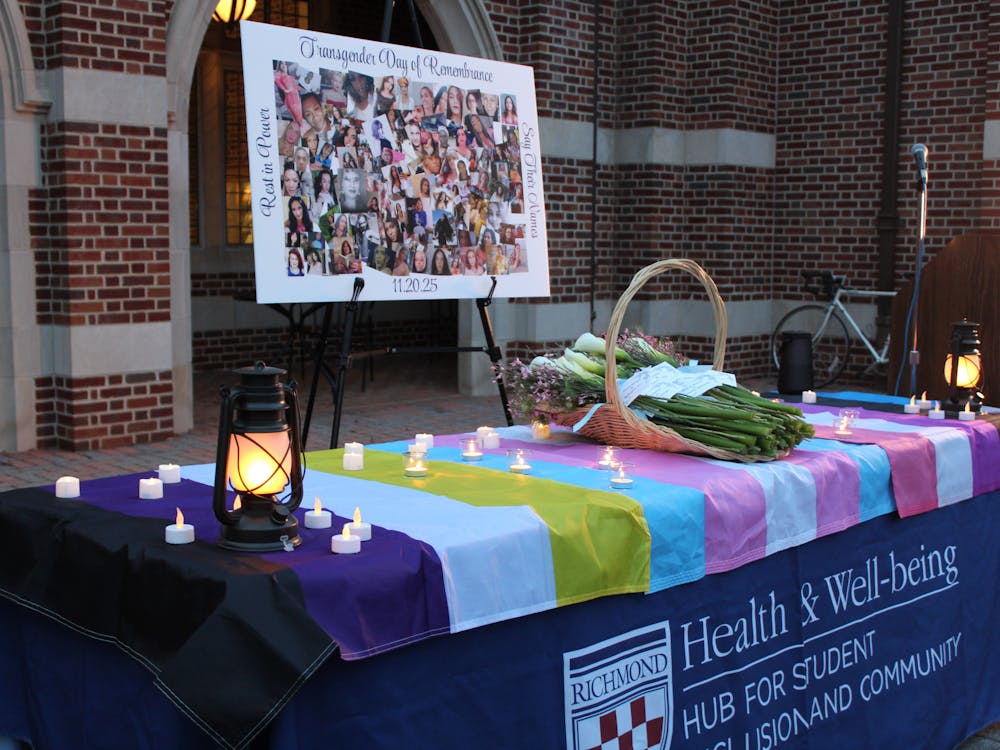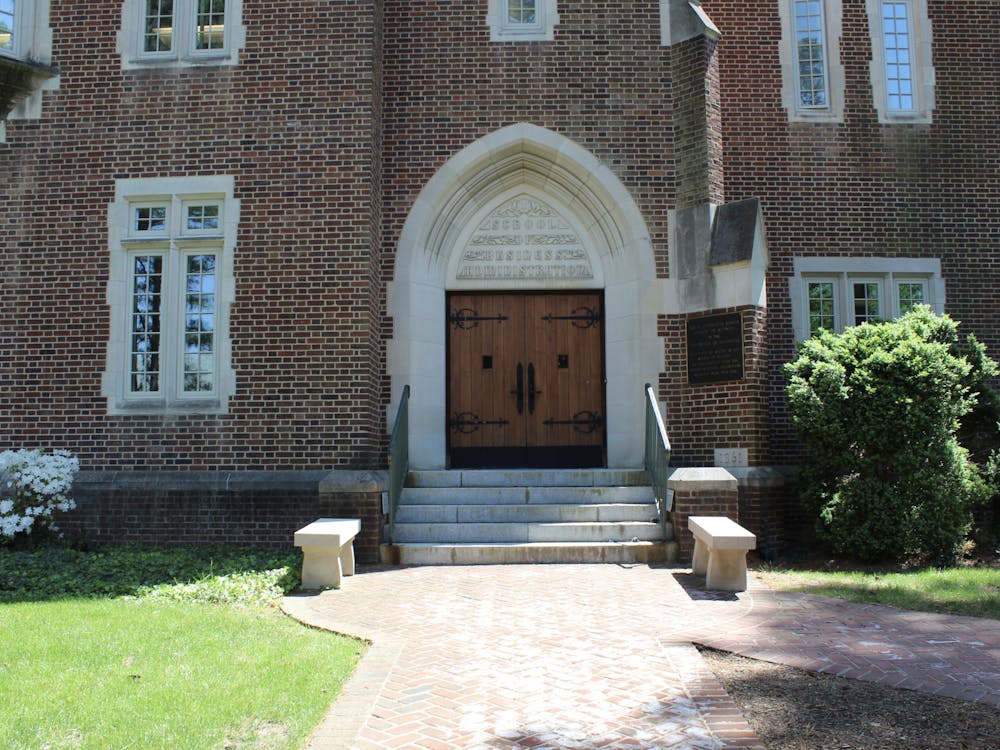The University of Richmond has joined the efforts to "Go Green" by promoting sustainability through various conservation programs, student groups and Leadership in Energy and Environmental Design-certified architecture.
Although Richmond has paid attention to environmental issues for many years, the efforts increased when President Ayers signed the President's Climate Commitment in 2007, according to the sustainability page on the university's website. By signing this agreement, the university agreed to take immediate action, said Megan Zanella-Litke, the sustainability coordinator.
"I think universities are in a unique position in that they are able to spearhead new ideas and try them out and create a path for traditional businesses to follow," she said.
Zanella-Litke also said that the university had chosen to focus on waste minimization by building all new architecture to meet LEED silver standards, buying all energy efficient appliances and making an alternative transportation plan. In addition, Richmond has agreed to start work on educational programs for sustainability to develop a Climate Action Plan that would bring the school to carbon neutrality, Zanella-Litke said.
According to the sustainability website, one of Richmond's biggest green initiatives is recycling. Part of this goal includes Richmond's participation in RecycleMania, an eight-week competition aimed at waste minimization on college campuses across the country. The program looks at overall waste production, which includes calculating not only how much the universities recycle, but also how much trash is sent to landfills.
One of the costliest and most prominent additions to Richmond's sustainability policies is the commitment to LEED silver standards in all new architecture. LEED is a program created by the U.S. Green Buildings Council in 2000, according to the official LEED website. The website stated its main purpose was to set a universal standard for green buildings and to provide a checklist with specific goals for schools to meet.
The six categories of LEED building criteria are: sustainable sites, water efficiency, energy and atmosphere, materials and resources, environmental quality and innovation in design. Andrew McBride, the university architect, is a certified LEED accredited professional. McBride said the goals of incorporating the LEED program into the university's architecture were meant to improve more than just the sustainability goals of the campus.
"In addition to environmental stuff, the checklists pay attention to occupant happiness and health," McBride said. "This includes making an effort in areas such as increasing natural light and giving residents better views from their rooms."
He said some of the environmental changes in the new LEED buildings included replacing carpets and paint with low volatile organic compounds, installing dual flush toilets to save water and using green products for maintenance.
McBride also said some members of the Richmond community have raised questions about the cost of sustainability efforts on campus, especially any increased prices that would affect students. He said that any increase because of architecture would be minimal and the benefits would make these additions worthwhile.
"Constructing a building that meets the LEED silver standards really only results in about a one percent increase in cost," McBride said. "These buildings are very durable and we focus on making changes to previously existing buildings rather than tearing any down."
The Weinstein Center for Recreation and Wellness was the first building to be LEED-certified, followed by Weinstein Hall and the Heilman Dining Center. McBride said applications would be submitted for other campus buildings to be LEED certified, including the Carole Weinstein International Center, the Freeman Hall renovation, Lakeview Hall, Queally Hall, Robins Stadium and the Westhampton Center.
Enjoy what you're reading?
Signup for our newsletter
A green initiative with more visible benefits to students is the Green Bike Program. The Recreation and Wellness department has been especially involved in the sustainability efforts. In addition to donating the bikes, the department has participated in the Green Office Program, waste and energy audits and recycling equipment.
Tom Roberts, assistant vice president of recreation and wellness, has worked at the university for more than 20 years and has contributed significantly to its sustainability efforts. Roberts said the Green Bike
Program was created not only to provide alternate forms of transportation to students, but also to increase exercise on campus.
"One of our hopes in the implementation of the program was that more students would bring their own bikes onto campus, and it seems as though this has been successful," Roberts said.
Although many students use the bikes for productive purposes, there have been several incidents of theft and vandalism. In some cases, Roberts said, bikes had even been found in Westhampton Lake.
"Of course negative situations surrounding the bikes are disappointing," Roberts said. "But every time I get frustrated about that, I see how many students are actually using them and really enjoying them."
The Green Bike Program generates no additional charges for the university because memberships sold to Richmond community members cover all costs incurred.
Zanella-Litke said it was important to integrate sustainability efforts such as the community garden or the environmental study program into student life.
"Everyone should live a life that's fulfilling to them," Zanella-Litke said. "It's important for students to understand that their career choices can impact the environment and they understand the ways they can limit those impacts and still have a meaningful career in the field that they choose."
Contact reporter Caroline Dilworth at caroline.dilworth@richmond.edu.
Support independent student media
You can make a tax-deductible donation by clicking the button below, which takes you to our secure PayPal account. The page is set up to receive contributions in whatever amount you designate. We look forward to using the money we raise to further our mission of providing honest and accurate information to students, faculty, staff, alumni and others in the general public.
Donate Now


